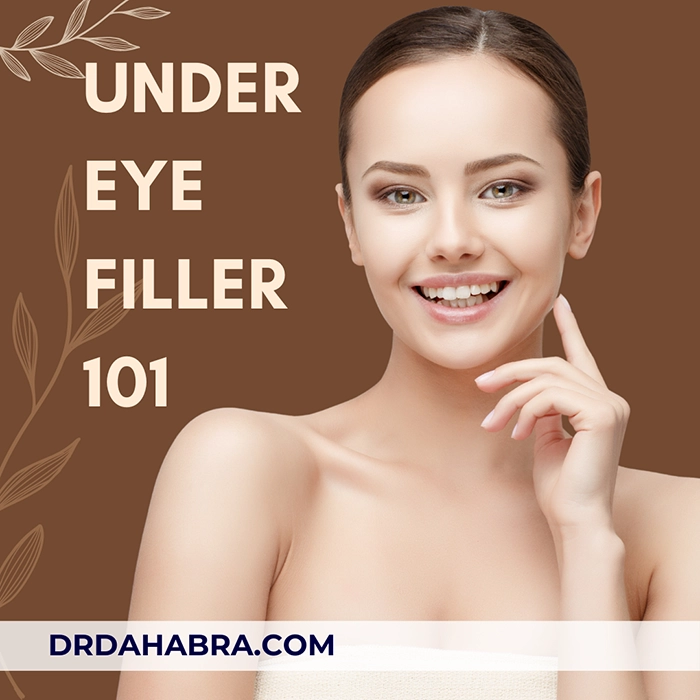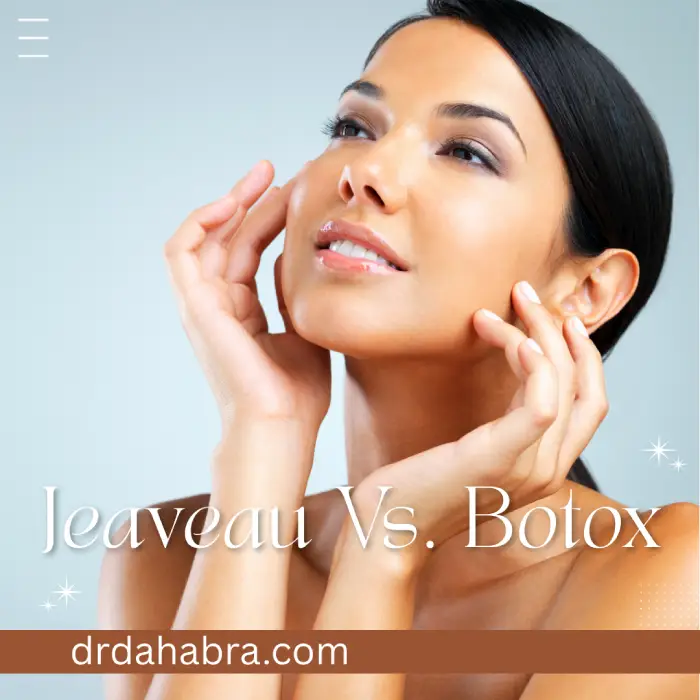Undereye Filler 101: Everything You Need To Know Before Trying it Out, Full Guide
Understanding Under Eye Fillers: What Are They?
Under-eye fillers, commonly called tear trough fillers, are non-surgical cosmetic treatments designed to address volume loss and skin laxity beneath the eyes. This article is about undereye filler 101 everything you need to know.
Utilizing substances like hyaluronic acid, these fillers aim to rejuvenate the under-eye area, reducing the appearance of dark circles and hollows.
The procedure involves injecting a gel-like substance into the tear trough region, which helps smooth out fine lines and restore a youthful contour to the under-eye area. This treatment particularly benefits individuals seeking a more rested and refreshed appearance without invasive surgery.
It’s essential to understand that while under-eye fillers can offer significant improvements, they are not a one-size-fits-all solution. A thorough consultation with a qualified professional can determine if this treatment aligns with your aesthetic goals.
Table of Contents
1. Mechanism of Action: How Do Under-Eye Fillers Work?
2. Benefits of Under Eye Fillers: More Than Just Aesthetic
3. The Procedure: What to Expect During Treatment
4. Post-Treatment Results: Timeline and Expectations
5. Popular Filler Options: Choosing the Right One
6. Safety Profile: Are Under-Eye Fillers Safe?
7. Selecting a Qualified Injector: Importance and Tips
8. Ideal Candidates: Who Should Consider Under Eye Fillers?
9. Potential Side Effects: What You Need to Know
10. Aftercare: Ensuring Optimal Results
11. Cost Considerations: Understanding the Investment
12. Comparing Alternatives: Other Treatments for Under-Eye Concerns
13. Longevity of Results: How Long Do Fillers Last?
14. Real-Life Transformations: Before and After Insights
15. Table: Factors Affecting the Cost of Under-Eye Fillers
16. Frequently Asked Questions (FAQs)
17. Conclusion
18. References
1. Mechanism of Action: How Do Under Eye Fillers Work?
Under-eye fillers primarily utilize hyaluronic acid, a naturally occurring substance in the body known for its hydrating properties. When injected into the tear trough area, hyaluronic acid attracts water molecules, adding volume and plumping the skin.
This added volume helps reduce the depth of under-eye hollows, diminish shadows, and smooth out fine lines. The result is a brighter and more youthful under-eye appearance.
Moreover, hyaluronic acid fillers are reversible, offering an added layer of safety. Hyaluronidase can dissolve the filler if desired results aren’t achieved or complications arise.
2. Benefits of Under Eye Fillers: More Than Just Aesthetic
Under-eye fillers offer a range of benefits beyond mere cosmetic enhancement. They can significantly reduce the appearance of dark circles, making individuals look more awake and rejuvenated.
By addressing volume loss, these fillers smooth out under-eye hollowing and wrinkles, contributing to a more youthful facial contour. This non-invasive treatment provides immediate results with minimal downtime, making it an attractive option for those seeking quick improvements.
Furthermore, the psychological boost from looking refreshed can enhance self-confidence and overall well-being. It’s a testament to how aesthetic treatments can positively impact one’s quality of life.
3. The Procedure: What to Expect During Treatment
The under-eye filler procedure is relatively quick and straightforward. Initially, the area is cleansed, and a topical anesthetic is applied to minimize discomfort.
The practitioner injects the filler into the tear trough using a fine needle or cannula. The process typically takes 15 to 30 minutes, depending on individual needs.
Post-injection, gentle massage may be applied to ensure even distribution. Patients can resume normal activities immediately, with minimal restrictions.
4. Post-Treatment Results: Timeline and Expectations
Results from under-eye fillers are often visible immediately after the procedure. However, it’s common to experience mild swelling or bruising, which subsides within a few days.
The full effect becomes more apparent as the filler settles, typically within one to two weeks. Patients can expect a smoother, more youthful under-eye area, with reduced hollows and dark circles.
These results can last anywhere from 6 to 12 months, depending on factors like metabolism, lifestyle, and the specific filler used.
5. Popular Filler Options: Choosing the Right One
Several hyaluronic acid-based fillers are commonly used for under-eye treatments. Restylane and Juvederm are among the most popular choices, and they are known for their smooth consistency and natural-looking results.
Restylane is often favored for its ability to integrate seamlessly into the skin, making it suitable for delicate areas like the under-eyes. Juvederm, on the other hand, offers a slightly firmer texture, providing more substantial volume restoration.
The choice between fillers depends on individual anatomy, desired outcomes, and practitioner recommendation. A thorough consultation ensures the selection of the most appropriate product for optimal results.
6. Safety Profile: Are Under Eye Fillers Safe?
Under-eye fillers are generally considered safe when administered by experienced professionals. Hyaluronic acid, the primary component, is biocompatible and poses minimal risk of allergic reactions.
However, as with any procedure, there are potential risks. Common side effects include temporary swelling, bruising, and redness at the injection site.
Rare complications can include lumps, asymmetry, or vascular occlusion.
Choosing a qualified injector and following post-treatment care instructions reduces the likelihood of adverse effects. Open communication with your practitioner is key to ensuring safety and satisfaction.
7. Selecting a Qualified Injector: Importance and Tips
The success and safety of under-eye filler treatments heavily depend on the skill and experience of the injector. Selecting a practitioner specializing in facial aesthetics and thoroughly understanding the delicate under-eye anatomy is crucial.
Researching credentials, reading reviews, and viewing before-and-after photos can provide insight into the practitioner’s expertise. Don’t hesitate to ask questions about their experience, techniques, and approach to complications during consultations.
Remember, a reputable injector prioritizes patient safety and satisfaction over aggressive marketing or discounted prices. Investing time in selecting the proper professional ensures optimal outcomes.
8. Ideal Candidates: Who Should Consider Under Eye Fillers?
Under-eye fillers are suitable for individuals experiencing volume loss, mild to moderate hollows, or dark circles due to aging or genetics. Those seeking non-surgical solutions for a refreshed appearance often find this treatment beneficial.
However, it’s not ideal for everyone. Individuals with significant under-eye bags, skin laxity, or certain medical conditions may require alternative treatments.
A comprehensive consultation helps determine candidacy.
Being in good overall health, having realistic expectations, and understanding the procedure’s limitations are essential for prospective patients.
9. Potential Side Effects: What You Need to Know
While under-eye fillers are generally safe, potential side effects can occur. Common issues include swelling, bruising, and tenderness at the injection site, typically resolving within a few days.
Rare complications may involve lumps, asymmetry, or the Tyndall effect, where the skin appears bluish due to superficial filler placement. In sporadic cases, vascular occlusion can occur, leading to tissue damage.
Promptly reporting unusual symptoms to your practitioner ensures timely management and minimizes risks. Adhering to post-treatment care guidelines further reduces the likelihood of adverse effects.
10. Aftercare: Ensuring Optimal Results
Proper aftercare is vital for achieving the best results from under-eye fillers. Immediately post-treatment, applying cold compresses can help reduce swelling and bruising.
Avoid strenuous activities, alcohol, and exposure to extreme temperatures for at least 24 hours. Refrain from touching or massaging the treated area unless advised by your practitioner.
Following these guidelines promotes healing, ensures the filler settles correctly, and enhances overall satisfaction with the procedure.
11. Cost Considerations: Understanding the Investment
Under-eye filler’s cost can vary significantly depending on several factors, such as geographic location, the expertise of the injector, and the type of filler used. In Florida, the under-eye filler price generally ranges from $750 to $1,500 per session, with some high-end practices charging more for premium services or advanced techniques.
It’s important to understand that cheaper doesn’t always mean better. A lower price may indicate less experienced injectors or substandard products.
Since this area is highly delicate, investing in a reputable clinic with trained professionals is essential to avoid complications and ensure natural-looking results.
Additionally, some individuals may require more than one syringe or periodic touch-ups to maintain the results. Be sure to ask about package deals or follow-up costs during your consultation so you have a clear understanding of the total investment involved.
12. Comparing Alternatives: Other Treatments for Under Eye Concerns
While under-eye fillers are effective for many, they aren’t the only option.
People with severe puffiness or fat pads may benefit more from lower eyelid surgery (blepharoplasty), which removes or repositions excess fat. This surgical option provides more permanent results but involves a longer recovery and higher costs.
For those hesitant about injections, non-invasive treatments like laser therapy, microneedling, and PRP (platelet-rich plasma) can stimulate collagen production and improve skin texture. Although these may not offer the same dramatic volume correction, they can effectively treat dark circles under the eyes and fine lines under the eyes.
Another popular alternative is using high-quality eye creams or serums with active ingredients like retinol and peptides. These can help improve the skin’s elasticity and brightness over time, although results will be more subtle and gradual.
13. Longevity of Results: How Long Do Fillers Last?
One of the most commonly asked questions is, “How long do fillers last under eyes?” The answer typically falls between 6 to 12 months. However, this can vary based on the filler type, metabolism, and lifestyle habits, such as sun exposure and smoking.
Some patients notice subtle fading around the 6-month and opt for a touch-up. Others may enjoy visible results for up to a year or more, especially if the filler is placed deeply and the product used is more cohesive and durable, such as Juvederm Volbella or Restylane Eyelight.
It’s also worth noting that repeat treatments may yield more lasting results as the body builds some collagen in response to the filler, even after the product has been absorbed.
To make under-eye filler last longer, maintain a healthy lifestyle, avoid excessive sun, and diligently follow your provider’s aftercare instructions.
14. Real-Life Transformations: Before and After Insights
Looking at under-eye fillers before and after photos can give you a realistic sense of what to expect.
Many people notice an immediate reduction in under-eye hollows, and the area appears smoother and more hydrated. Over time, the appearance of dark circles is reduced, under-eye hollowing is smoothed out, and wrinkles become more evident as the filler settles.
These photos also help you appreciate the importance of symmetry and subtle enhancement. A good injector knows that the goal isn’t perfection but balance and harmony with the rest of your facial features.
Seeing under-eye fillers before and after transformations can set appropriate expectations and help you communicate your goals effectively.
Most importantly, people often feel more confident and appear well-rested. Providing a more youthful and rested appearance is not just a promise — it’s a commonly experienced result that can make a huge difference in your self-esteem and how others perceive you.
15. Table: Factors Affecting the Cost of Under Eye Fillers
Factor Explanation Impact on Cost
Type of Filler Juvederm, Restylane, or premium long-lasting options Higher-end fillers increase cost
Injector’s Experience Board-certified professionals charge more Greater expertise often equals higher fees
Clinic Location Urban centers like Miami charge more than rural areas Major cities typically have higher rates
Amount of Product Used One or multiple syringes may be needed More product = higher price
Treatment Complexity Deeper hollows or asymmetry require more skill Complexity increases cost
Follow-up Appointments Touch-ups and consultations add to overall expense Recurring visits can increase total
Equipment and Technology Use of cannulas or imaging adds safety and precision Advanced tools may cost more
Demand & Popularity High demand for top clinics can drive prices up Exclusive providers may charge premiums
Brand Reputation Clinics with renowned reputations often charge more Established brands = higher cost
Promotions & Packages Discounts or bundles can reduce cost May lower per-session cost but still add up
16. Frequently Asked Questions (FAQs) About Undereye Filler 101 Everything You Need To Know
Q1. How long do fillers last under the eyes?
Concise Answer: Under-eye fillers typically last between 6 to 12 months.
Detailed Answer: The longevity of under-eye fillers depends on the type of product used, your metabolism, and how your body breaks down the filler. Some may notice fading by 6 months, while others can enjoy results for up to a year or more.
Q2. Is filler good for under the eyes?
Concise Answer: Fillers can effectively improve the under-eye area when used correctly.
Detailed Answer: Under-eye fillers help address hollowing, dark circles, and fine lines. When performed by a skilled injector, they can refresh your look without surgery, but suitability depends on individual anatomy.
Q3. How much do undereye fillers cost?
Concise Answer: The average cost ranges from $750 to $1,500 per session.
Detailed Answer: Prices vary based on location, injector expertise, and the type of filler used. Some people may need more than one syringe or additional touch-ups, increasing the overall cost.
Q4. How painful are under-eye fillers?
Concise Answer: Most patients report minimal pain during the procedure.
Detailed Answer: The area is numbed with a topical anesthetic beforehand. You might feel a slight pinch or pressure, but discomfort is generally brief and well-tolerated.
Q5. What is the best filler for under-eye?
Concise Answer: Restylane and Juvederm are commonly recommended.
Detailed Answer: These hyaluronic acid-based fillers are smooth and ideal for the delicate under-eye area. Your provider will choose the best one based on your skin type and desired results.
Q6. At what age is under-eye filler typically used?
Concise Answer: Most people start considering fillers in their late 20s to early 30s.
Detailed Answer: Under-eye concerns like hollowing and dark circles can appear early due to genetics or lifestyle. However, there’s no “perfect age” — suitability is based more on the condition of the under-eye area than age alone.
Q7. How long does an under-eye filler application take?
Concise Answer: The entire procedure usually takes 15 to 30 minutes.
Detailed Answer: After numbing, the filler is injected with a fine needle or cannula. The process is quick and typically done in one visit with an immediate return to normal activities.
Q8. Is under-eye filler suitable for fragile skin?
Concise Answer: Yes, but it must be done with great care.
Detailed Answer: Thin skin increases the risk of visible filler or discoloration. An experienced injector will use the proper filler type and technique to minimize risks and ensure a natural result.
Q9. Which type of dermal filler delivers long-lasting results while minimizing the appearance of dark circles?
Concise Answer: Juvederm Volbella and Restylane Eyelight offer long-lasting, natural results.
Detailed Answer: These fillers are formulated for delicate areas like the under-eyes and have a smooth texture that integrates well with thin skin, minimizing shadows and improving brightness.
Q10. Are under-eye fillers really that bad?
Concise Answer: No, not when done by qualified professionals.
Detailed Answer: Risks exist, as with any cosmetic procedure, but when performed correctly, under-eye fillers are safe and highly effective for the right candidates.
Q11. Why do some under-eye fillers fade away after just two months?
Concise Answer: It could be due to a fast metabolism or improper filler placement.
Detailed Answer: Rapid filler breakdown can also occur if the wrong product is used or if it isn’t injected deep enough. Follow-up treatments may prolong results.
Q12. How do you massage under-eye filler bumps?
Concise Answer: Always consult your provider before attempting to massage.
Detailed Answer: Light pressure with clean fingers may help sometimes, but the incorrect technique can worsen the problem. Your provider can safely address filler irregularities with professional tools.
Q13. What is the downside of undereye fillers?
Concise Answer: Possible side effects include swelling, bruising, and unevenness.
Detailed Answer: While uncommon, complications like the Tyndall effect or vascular occlusion can occur. Choosing an expert injector reduces these risks significantly.
Q14. What is better than under-eye filler?
Concise Answer: It depends on your needs; surgery or laser treatments may be better for some.
Detailed Answer: Lower eyelid surgery, PRP, or laser resurfacing may offer more permanent or suitable results for specific under-eye concerns. A consultation can determine the best option.
Q15. What celebrity has tear-trough fillers?
Concise Answer: Many celebrities are rumored to have them, but few confirm.
Detailed Answer: Stars like Kim Kardashian and Chrissy Teigen are often speculated to have used fillers. Whether confirmed or not, under-eye fillers are common in the entertainment industry for their subtle rejuvenation.
17. Conclusion: Undereye Filler 101 Everything You Need To Know
Under-eye fillers have revolutionized the approach to addressing common concerns like dark circles, hollows, and fine lines.
By utilizing hyaluronic acid-based injectables, individuals can achieve a refreshed and youthful appearance without invasive surgery. The procedure’s minimal downtime and immediate results make it an attractive option for those seeking subtle yet impactful enhancements.
However, the success of under-eye filler treatments heavily relies on the expertise of the injector. Choosing a qualified, experienced professional ensures optimal results and minimizes potential risks and complications.
It’s essential to have a thorough consultation to discuss individual needs and expectations and to determine the most suitable treatment plan.
In conclusion, under-eye fillers offer a promising solution for rejuvenating the delicate under-eye area.
With proper care, realistic expectations, and the guidance of a skilled practitioner, individuals can enjoy the benefits of a more vibrant and rested appearance.
We have covered everything about undereye filler 101 everything you need to know.
Everything You Need to Know About Under-eye Filler With Dr. Dahabra
Experience the detailed guide on under-eye fillers and retain your youth with Dr. Dahabra. Why wait to unlock your beauty?
Call us now at (954) 595-2607 or book online. Your journey begins with just a click or a call.
Embrace the beauty, embrace innovation – Embrace You.
18. References
- Beverly Hills Wellness Center & Med Spa, Florida
- Plantation Med Spa, Florida
- West Palm Beach Med Spa
- Under-eye filler treatment: A comprehensive review
- Hyaluronic acid fillers in aesthetic medicine
- Safety and efficacy of tear trough fillers
- Advancements in dermal filler techniques
- Patient satisfaction with under-eye fillers
- Complications associated with under-eye fillers
- Longevity of hyaluronic acid fillers in the periorbital region
- Comparative study of different under-eye filler materials
- Techniques for minimizing bruising in under-eye filler treatments
- Role of patient selection in successful under-eye filler outcomes




